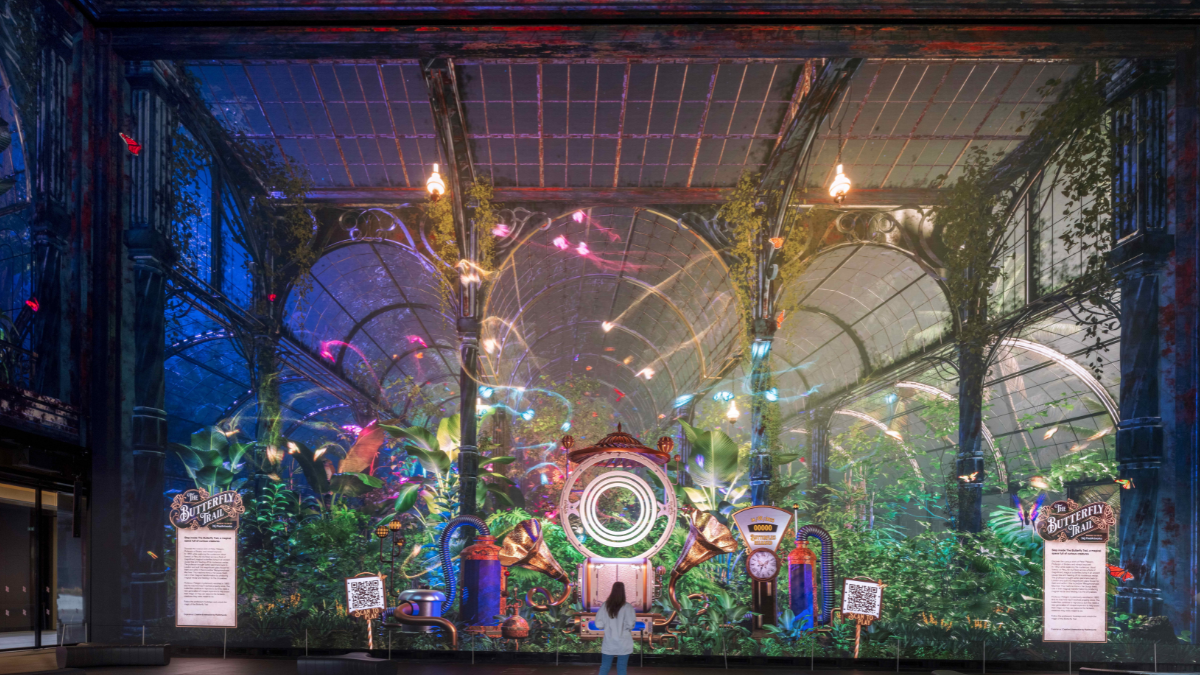When Las Vegas’ newest venue, Sphere, launched at the end of 2023, it instantly went viral. The giant spherical venue tapped U2 for a residency for the launch, reportedly promising the band 90 percent of ticket revenue to convince them to take on the risk of opening a new venue. Sphere is a Las Vegas product — its extravagance is the kind that can only feel at home in Sin City. Brought to life by the Madison Square Garden Entertainment Group with $2.3 billion in investment, Sphere is a 366 feet tall, 516 foot wide giant dome that is surrounded by two giant screens — one in the exterior and one in the interior. The 16K LED screen inside wraps more than 180 degrees around the room, which has more than 160,000 speakers that uses ‘beam-forming’ technology. Sphere is so dizzyingly immersive that the guests are encouraged to take advantage of the sensory room if they feel overstimulated.
Is this technology-driven experience the future of arts and entertainment?
London’s growing immersive scene
Immersive art has been a growing trend. For the audience, immersive experiences offer a more comprehensive way of interacting with art. By tapping into various creative elements such as visuals and sound, they provide a kind of depth that is unique to the medium. ‘When we combine the location with the screen technology, the scale of the screens and our creative technology, it really becomes the ultimate canvas for storytelling,’ says Alexandra Payne, Creative Director at Outernet, an immersive entertainment and culture district in Soho.
Since it launched over a year ago, Outernet has put on exhibitions in cooperation with art institutions such as Serpentine Gallery and Royal College of Art and has helped brands like Netflix, L’Oréal, Marc Jacobs and Uniqlo craft high-impact campaigns. Outernet has an internal creative studio that brings together motion designers, editors, producers, programmers, real-time designers, creative technologists and interactivity specialists to create some of the more technology and design heavy content they exhibit. ‘When you combine those two aspects into one studio team, it allows you to really push the boundaries on creativity and elevate creative to new heights because you’re able to bring in things like spatialized audio, you can bring in interactivity in terms of gestural motion or layering other technologies,’ says Payne.
Outernet’s The Butterfly Trail used real-time engines and augmented reality to transport audiences to a botanical garden with beautiful graphics where they could hold butterflies in their hands. ‘When you’re coming into our district and into our spaces, we want to transport our audiences to another world. Whether that’s a beautiful botanical glass house in the middle of London or to a NASA space station,’ says Payne. Outernet pursues a thoughtful approach to using creative technology, utilising its technology stack only when it enhances the visitor experience.
Technology isn’t enough to bring a captivating immersive experience to life. The exhibitions also need to excel in storytelling. One of the newest additions to London’s immersive venues, Lightroom, achieves this by collaborating with established storytellers. For its first-ever exhibition last year, the venue worked with David Hockney for three years to craft an experience that showcased 60 years of work and delved into Hockney’s artistic process. Their second installation, The Moonwalkers: A Journey with Tom Hanks, tells the story of the Apollo missions.
‘There’s lots of places making use of projection and audio technology to create shows that make audiences feel inside the work in ways that just weren’t possible ten or fifteen years ago,’ says Richard Slaney, Lightroom’s CEO. ‘But in many ways making a visually or sonically ‘immersive’ show is now the easy part — and the challenge for making truly great shows now is to give it some soul with great storytelling. That’s what we’re trying to do at Lightroom — working with incredible artists like David Hockney or Tom Hanks and letting them use our space to invite audiences inside their work and their process.’
Similarly, Sphere brought on designer Es Devlin and artists John Gerrard and Marco Brambilla to create the visuals for the U2 residency, where each collaborator visualised a different story about Las Vegas and Nevada.
It’s easy to imagine a future in which various cutting-edge technologies will be seamlessly integrated into the art to elevate the artistic experience for the audiences. As new technological capabilities are developed, investment will flow into creating new immersive experiences. ‘What will be really interesting to watch is what new venues do with the immersive format, rather than just the fact they are immersive,’ says Slaney. ‘I think as time goes on and audiences become more and more used to this format of entertainment, we’ll see more and more of a focus on creating immersive shows with real value. That’s got to be a good thing.’
Featured image: The Butterfly Trail / Courtesy of Outernet

